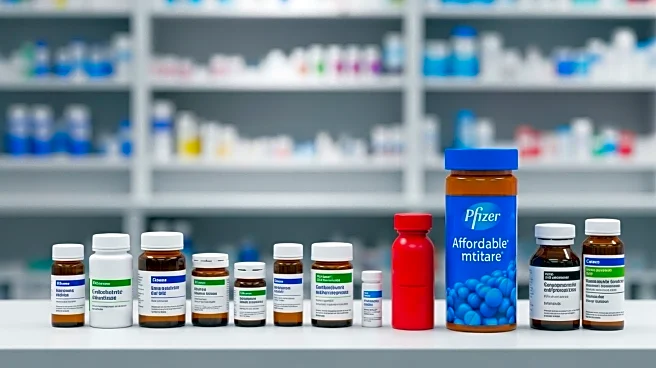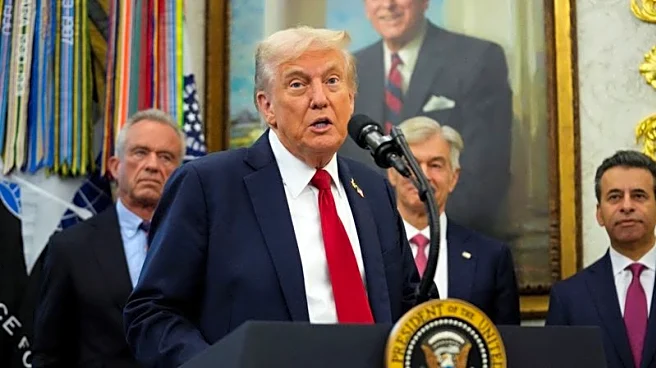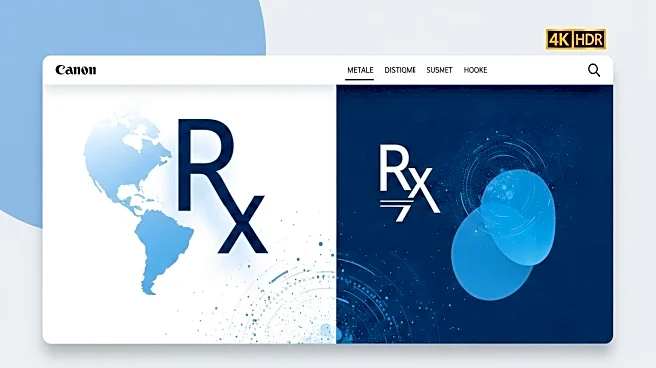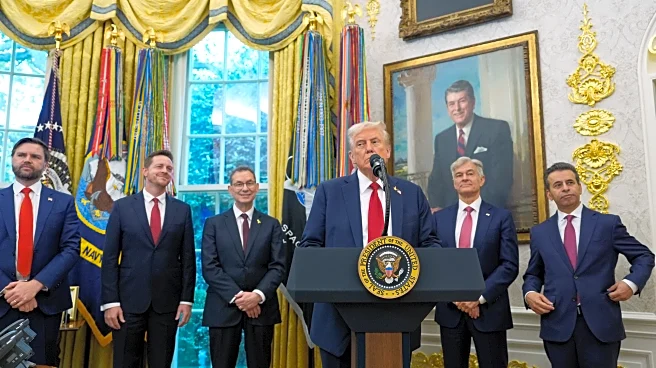What's Happening?
Pfizer has reached an agreement with the U.S. government to offer most of its drugs at a discount through a portal called TrumpRx, following President Trump's executive order on drug pricing. The deal includes a $70 billion commitment to U.S.-based manufacturing and a three-year exemption from tariffs. While Wall Street reacted positively, analysts noted that the benefits for patients remain unclear. The deal involves small Medicaid pricing concessions, amounting to 5% of U.S. sales, raising questions about its impact on drug affordability and access.
Why It's Important?
The agreement between Pfizer and the U.S. government highlights ongoing challenges in drug pricing and access. While the deal benefits Pfizer's business interests by relieving tariffs and encouraging domestic manufacturing, its impact on patient affordability is uncertain. The direct-to-consumer discounts may not significantly reduce out-of-pocket costs for patients, especially for expensive drugs like Xeljanz. The deal raises broader questions about the effectiveness of government initiatives in addressing drug pricing and the role of pharmaceutical companies in ensuring affordable access to medications.
What's Next?
The implementation of the TrumpRx portal and its impact on drug pricing will be closely monitored by stakeholders. Questions remain about how the portal will operate, the relationship between list and net prices, and the potential for patients to use insurance. The deal may prompt further discussions on drug pricing policies and the need for comprehensive solutions to improve affordability and access. Stakeholders, including healthcare professionals, policymakers, and patient advocacy groups, will likely engage in debates on the effectiveness of such agreements in addressing drug pricing challenges.
Beyond the Headlines
The Pfizer-Trump drug pricing deal highlights ethical considerations in pharmaceutical pricing and access. The agreement raises questions about transparency in pricing, the role of government in regulating drug costs, and the balance between business interests and patient needs. The deal's focus on direct-to-consumer pricing may lead to confusion among patients and healthcare providers, emphasizing the need for clear communication and education on drug pricing policies. Long-term, the deal could influence future negotiations between pharmaceutical companies and governments, shaping the landscape of drug pricing and access.












